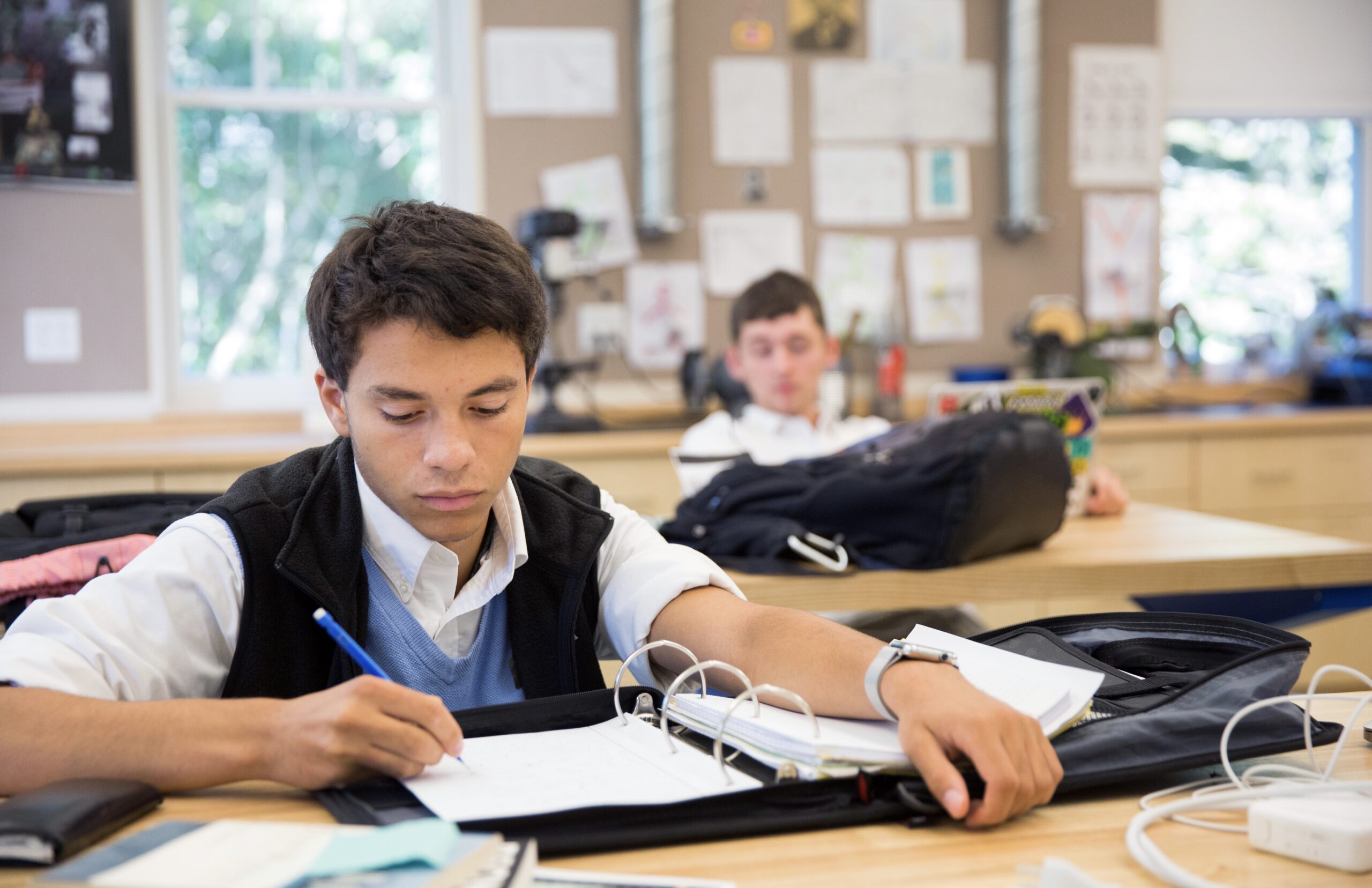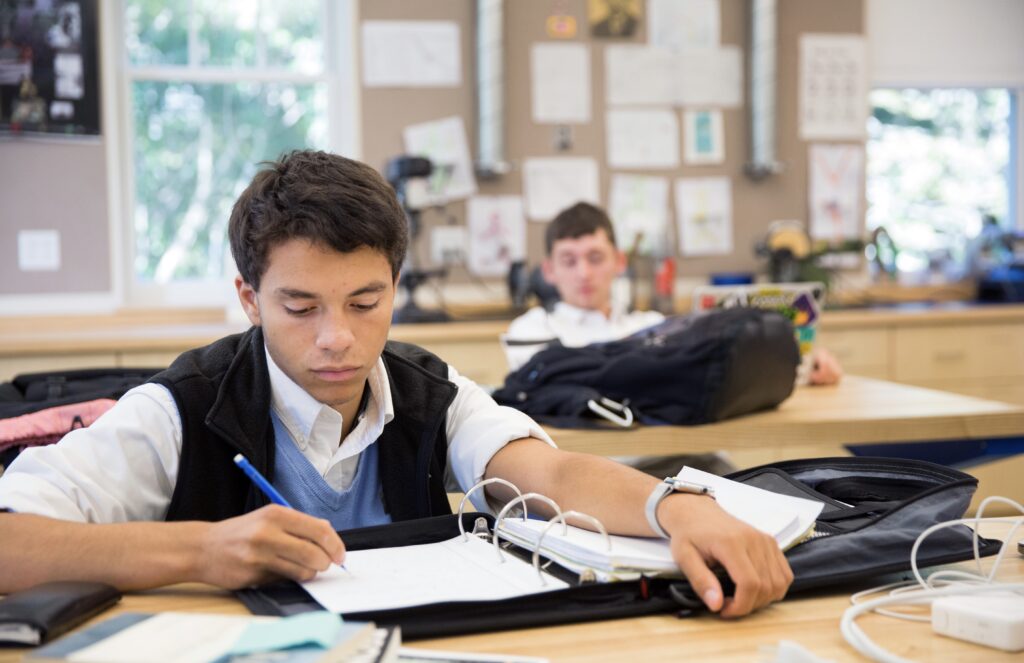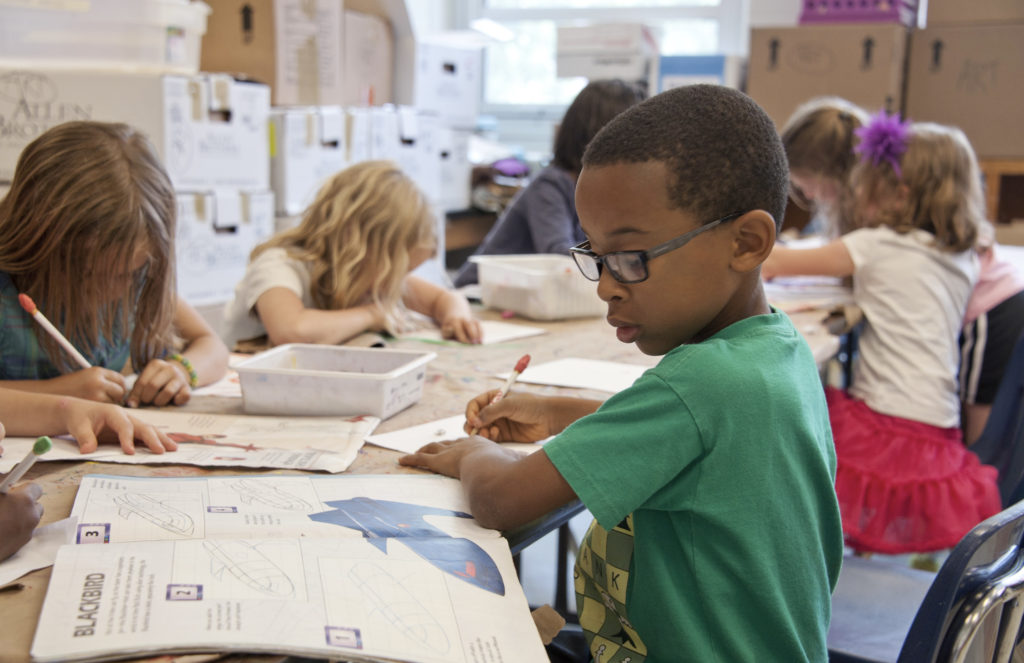Essential Executive Functions
The executive functions are at the core of learning and are crucial for success in school and beyond. These cognitive processes allow us to approach a task or goal, whether it is academic or non-academic, manage our attention, plan each step, and regulate our emotions to achieve the desired outcome. Specifically in the school setting, the executive functions “make it possible for children to sustain attention, keep information in mind, refrain from responding immediately, resist distractions, tolerate frustration, consider the consequences of different behaviors, and plan for the future (Carlson, Zelazo, and & Faja, 2013)” (Meuwissen & Zalzo, 2014, p.18). Executive function skills are essential not only for children to sustain their attention to gain essential math and literacy skills, but also to manage all the emotional responses that come with learning.
Our executive functions are a widely examined part of cognitive processing. Research shows that there are specific factors that contribute to the development of executive function skills: our biological makeup, our environment, and our experiences. As we grow from infants, to adolescents, to adults, our brain makes connections and develops wiring that supports our ability to engage in goal-directed persistence, and our experiences, environment, and biology are what help us to establish patterns and routines that support or inhibit the executive functions. When responding to the sets of tasks required to manage life events or schoolwork, research has determined that individuals engage two types of executive functions: cool executive function and hot executive function.
Cool Executive Function
We activate our cool executive functions when we are asked to complete a task that lacks an emotional or motivational component, meaning that the task at hand is low-stakes and there are few consequences dependent on successful or unsuccessful completion. Many executive functioning tests given in clinical settings measure these types of cool executive function skills. These assessments aim to gauge working memory and cognitive flexibility around a set of tasks. However, because these tasks are given in a controlled setting, they are not able to measure an individual’s emotional response and how that response may support or inhibit memory or understanding. The Dimensional Card Sort is a frequently used measure to these cognitive processes in young children. It asks individuals to sort cards in varying ways, assessing a person’s ability to think about information in one way and then flexibly shift to another. For example, testers are required to sort a set of cards by color and then to sort the same deck by the animal image on the card. Completing this task in a clinical setting is divorced from an emotional response; the individual sorting the cards can act or problem-solve without worrying about the outcome or impact on their lives (Meuwissen & Zalzo, 2014).
Hot Executive Function
Although research has established that there are two categories, it also acknowledges that it can be difficult to separate hot and cool executive functions because psychologists maintain that learning is never divorced from emotions (Zelazo, Qu, & Creek, 2010). The real world is filled with emotional responses and consequences to actions, and the ability to engage in goal-directed persistence is, more often than not, guided by an emotional response, no matter the task (Zelazo, Qu, & Creek, 2010). For example, Philip David Zelazo and colleagues (2010) conducted a study with three-year-olds to measure inhibitory control, a key cognitive process in executive functions. These children were presented with a problem to solve. First, the children were asked if the interviewer should have one candy now or if this individual should wait until after completing a set of tasks and receive four candies. Separate from personal consequences for this choice, many children selected the candy later option for the interviewer. However, when asked to choose for themselves, many were unable to use inhibitory control and wait for more candy. This measure shows that when there are personal consequences for our actions, it is far more challenging to delay gratification and visualize the future.
As opposed to thinking of hot and cool executive functions as separate entities, Zelazo suggests that these aspects should be conceived as a continuum interacting with each other to reflect, process, and solve problems (Zelazo, Qu, & Creek 2010). Specifically in the school setting, difficulty in reflecting, processing, and then solving problems when emotions are high can have an impact on a student’s ability to engage in academic tasks, particularly tasks that are associated with negative experiences or emotions. Think of the student who has her head down on the desk and is unable to participate in the lesson. Her disengagement could be a response to her anxiety and negative associations with content, and these negative associations render her unable to tolerate frustration, consider the consequences of her disengagement, or engage in problem-solving. This scenario demonstrates that “there is no cognition without emotion and visa versa” (Zelazo, Qu, & Creek, 2010, p. 99) and outlines the importance of addressing a student’s hot and cool executive function skills together, as many students are flooded with emotions when asked to complete schoolwork or academic tasks.
Psychological research demonstrates that “‘positive mood facilitates performance that may reflect improved EF’ (see Isen, 2003)”(Zelazo, Qu, & Creek, 2010, p. 105). Thus, when educators can facilitate positive engagement with schoolwork, there is often a better outcome. A 2021 article titled: “What Teachers Can Do to Engage Anxious Students?” by Jessica Minahan, Sarah Ward, and Kristen Jacobsen offers ways for educators to facilitate positive engagement with schoolwork. They outline that transition times can be difficult and suggest that focusing on easing students into less preferred tasks can mitigate feelings of anxiety and disengagement. Additionally, they suggest helping students engage metacognitively by asking students to visualize completed assignments and imagine the steps they need to take to arrive at the completed assignment. They assert that “‘this strategy can help students visualize the outcome and the sequence of the steps, allowing them to more accurately size up a task and prevent them from shutting down at the first glance of the directions’ (Ward & Jacobsen, 2014b)” (Minahan, Ward, & Jacobsen, 2021). They also suggest working with students to help reframe negative thinking about tasks through naming and rating a particular difficulty, and they encourage teachers to shift their language and to use words like “continue” over “start.”
Although challenging, it is an essential pedagogy to develop our students’ hot and cool executive function skills. See below for more resources on supporting students.
References
- Calkins, S. D., Bell, M. A., Armstrong, L. M., Zelazo, P. D., Qu, L., & Kesek, A. C. (2010). Hot Executive Function: Emotion and the Development of Cognitive Control. In Child development at the intersection of emotion and cognition (pp. 97–111). essay, American Psychological Association.
- Meuwissen, A. S., & Zelazo, P. D. (2014, October 31). Hot and cool executive function: Foundations for Learning and healthy development. ZERO TO THREE. Retrieved November 10, 2022, from https://eric.ed.gov/?id=EJ1125267
- Minahan, J., Jacobsen, K., & Ward, S. (2021). What can teachers do to engage anxious students? ASCD. Retrieved November 10, 2022, from https://www.ascd.org/el/articles/what-can-teachers-do-to-engage-anxious-students



